Land Acknowledgement
This Climate Literacy Resource is being developed at Smith College in the town currently known as Northampton, Massachusetts. Below we offer the land acknowledgment of the college. Such land acknowledgments are important because they credit the people who belong to the land:
We acknowledge that this campus is built within the ancestral homelands of the Nonotuck peoples. We also recognize our present-day neighboring Indigenous nations: the Nipmuc and the Wampanoag to the east, the Mohegan and the Pequot to the south, the Mohican to the west, and the Abenaki to the north. We acknowledge, too, the presence of Native people among and all around us.
However, land acknowledgments are not enough on their own. By offering a land acknowledgment to preface this webpage, we recognize that we – most professors and students at Smith – are settlers here. We also hope to inspire action to support Indigenous communities today.
Indigenous perspectives are essential to cultivating climate literacy. The climate information presented in this resource cannot be separated from the truth of European settler colonialism, in which colonizers throughout the world have systematically stolen land from Native groups and killed and displaced their inhabitants. Colonization is not a completed or singular event, but an ongoing process that continues to devastate Indigenous people throughout the world.
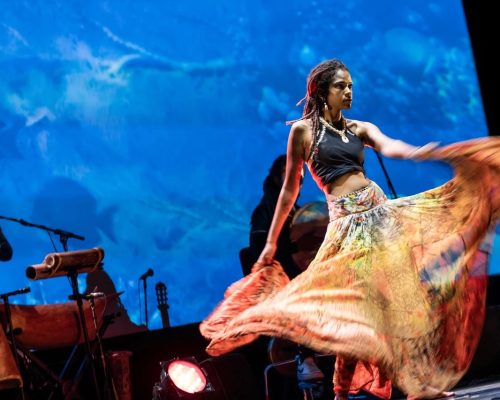
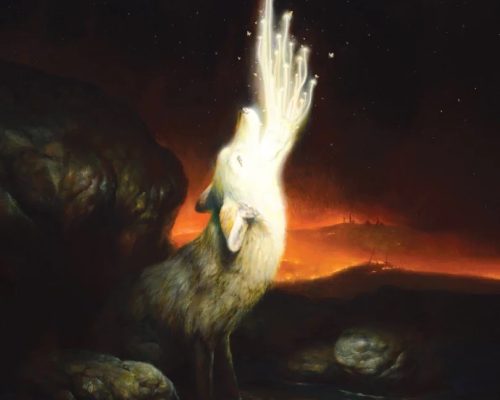
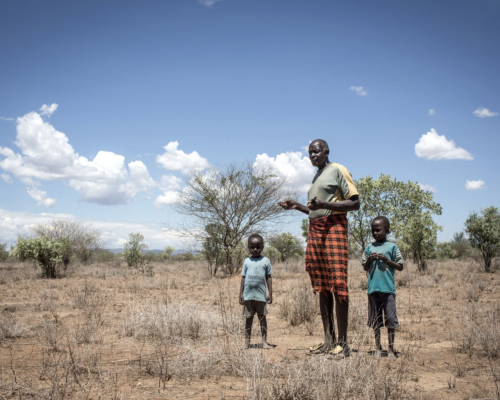
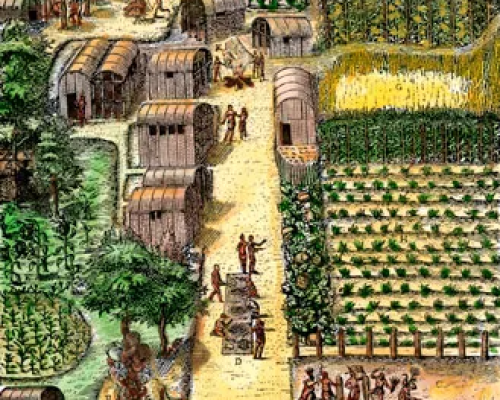

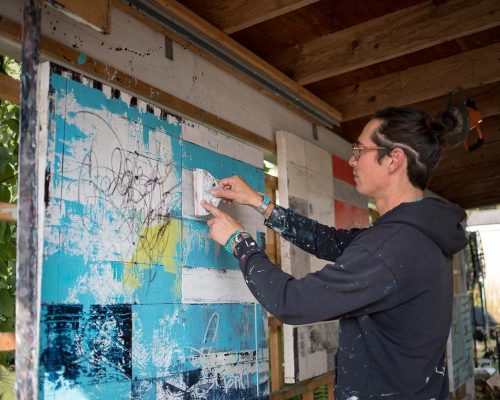
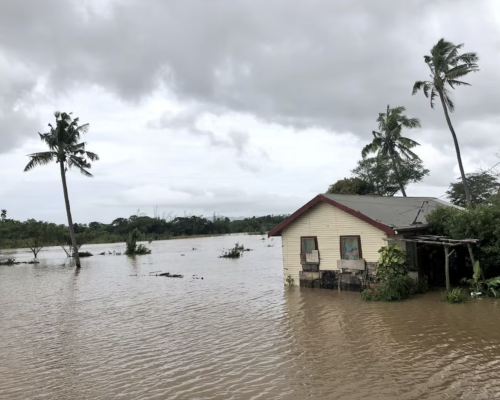
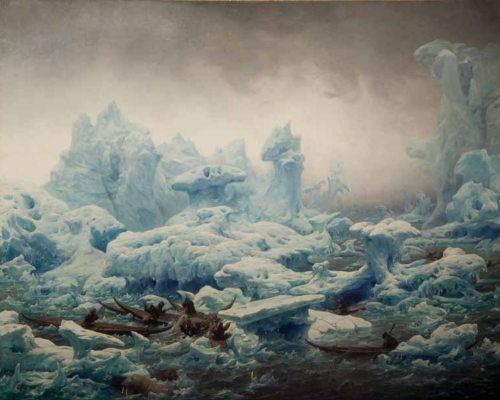
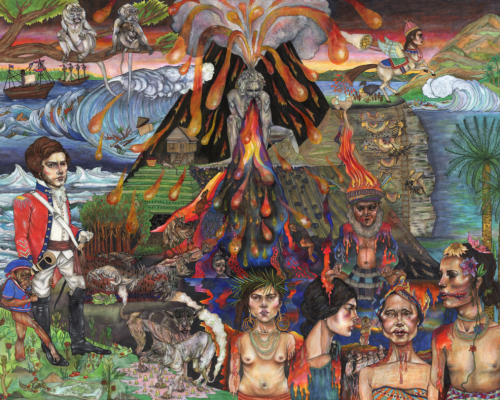
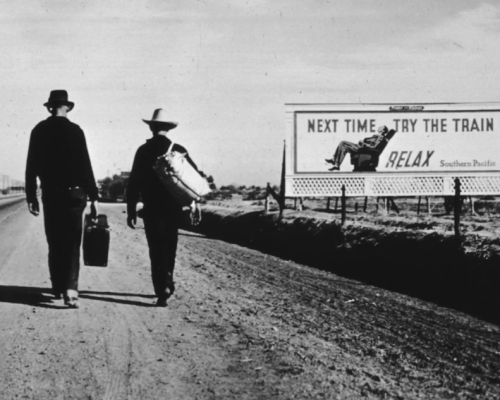

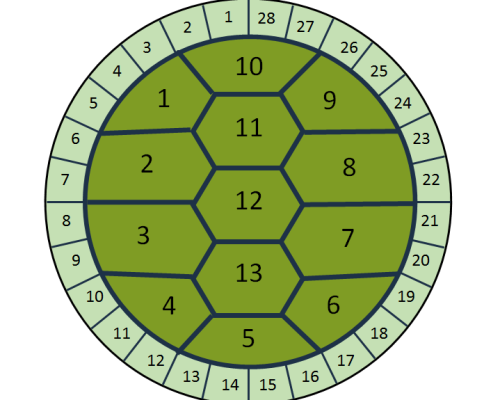
The drop-down menus below contain links to climate-related entries pertaining to Indigenous knowledge and perspectives, developed by the Smith College Climate in Arts and History team. The display above features selected images from these pages. The Exploration (In Progress) menu lists additional topics that are in development to become full-length entries.
Art
- Glaciers in Art
- The Year Without a Summer
- Big Weather
- Climate in Crisis: Environmental Change in the Indigenous Americas (2020-2023)
- Featured Indigenous Artists:
History/Social Studies
Art
- Saharan Cave Art Provides Insight into Past Climate
- Representations of Colonialism and Climate Change in Art
- Featured Indigenous Artists:
- Charlotte Allingham
- Tyana Arviso
- Alicia Maria Siu
- Marcus Trujillo
History/Social Studies
- Indigenous Peoples’ Relationships to Climate (Pre-Colonialism)
- Impact of Colonization on Climate and Indigenous Peoples
- Climatic and Environmental Knowledge as an Advantage in Indigenous Resistance to Colonization
- Global
- Impact of Climate Change on Indigenous Peoples Globally
Indigenous Perspectives
- Snowshoes and Indigenous Winter Ecologies
- Thinking with Glaciers
Languages
- Indigenous Languages as a Framework for Responding to Climate Change
- Indigenous Languages Reflect Different Climatic Frameworks than Dominant Western Languages
Literature
- Indigenous Poets Addressing Climate Change
- Tanaya Winder: Land Back as a Call to Action Against Climate Change
- Jake Skeets: Finding Home in the Desert
- Amber McCrary
- Kinsale Hueston
- Edyka Chilomé
- Indigenous Stories of Past Climate Change / Climate Events
- Ktsi Amiskw, The Great Beaver (Mt. Sugarloaf, South Deerfield, MA)
Music
- Iñupiaq Drumming and Global Warming
- Rain Dances (Ceremonies/Prayers for Rain)
- Hopi Snake-Antelope Dance
- Abalone Mountain Press
- Diné-owned press aiming to dismantle the literary canon and create space for Indigenous voices to be heard without accommodating the white gaze.
- Abramovitch, I. “The Story of Colonialism and Climate Change Told Through Centuries of Indigenous Artworks: Two exhibits at the Brooklyn Museum explore Native perceptions of nature and themselves.” https://www.nrdc.org/stories/story-colonialism-and-climate-change-told-through-centuries-indigenous-artworks
- Big Weather: Indigenous artists reflect on climate crisis – in pictures. (2021, April 14). The Guardian. http://www.theguardian.com/artanddesign/gallery/2021/apr/14/big-weather-indigenous-artists-reflect-on-climate-crisis-in-picture
- www.tyanaarviso.com
- Tyana Arviso is a Diné landscape photographer, creative director, and artist drawing inspiration from the colors of the earth, sun and moon
- Farrell, J., Burow, P. B., McConnell, K., Bayham, J., Whyte, K., & Koss, G. Effects of land dispossession and forced migration on Indigenous peoples in North America. 2021. Science, 374(6567), eabe4943. https://doi.org/10.1126/science.abe4943
- Our Beloved Kin: Remapping King Philip’s War
- Dr. Lisa Brooks, an Abenaki writer and scholar, outlines and details the history of King Philip’s War by connecting historical events with their place locations across the Northeast. Interwoven throughout this resource, Brooks explains how the climatic and environmental knowledge of Indigenous nations played a role in shaping history. Includes the story of Ktsi Amiskw (the Great Beaver), which parallels paleoclimate evidence of glacial Lake Hitchcock.
- Cruikshank, J. “Are Glaciers ‘Good to Think With’? Recognising Indigenous Environmental Knowledge.” Anthropological Forum, vol. 22, no. 3, Nov. 2012, pp. 239–50. Taylor and Francis+NEJM, https://doi.org/10.1080/00664677.2012.707972.
- Land, C. Decolonizing solidarity: Dilemmas and directions for supporters of indigenous struggles. 2015. Zed Books Ltd.
- Native-land.ca
- This website displays Indigenous territories and nations across the world. It is a useful tool to look up whose land you occupy.
- Simpson, L. B. “Land as Pedagogy.” In As We Have Always Done: Indigenous Freedom through Radical Resistance, 145–74. University of Minnesota Press, 2017. https://doi.org/10.5749/j.ctt1pwt77c.12.
- Audley, S., and D’Souza, A. B. “Creating Third Spaces in K-12 Socio-Environmental Education through Indigenous Languages: A Case Study.” Globalizations, vol. 0, no. 0, Feb. 2022, pp. 1–16. Taylor and Francis+NEJM, https://doi.org/10.1080/14747731.2022.2038833.
- Sakakibara, C. “Our Home Is Drowning”: Iñupiat Storytelling and Climate Change in Point Hope, Alaska.” Geographical Review 98, no. 4 (2008): 456–75. http://www.jstor.org/stable/40377348.
- Harrison, K. Indigenous music sustainability during climate change. Current Opinion in Environmental Sustainability, 43, 28–34. 2020. https://doi.org/10.1016/j.cosust.2020.01.003.
- George T. T. “The Stones Shall Cry out: Consciousness, Rocks, and Indians.” Wicazo Sa Review 19, no. 2 (2004): 105–25. http://www.jstor.org/stable/1409501.
- https://karunacenter.org/decolonizing-curriculum/
- An educational tool and bibliography for teaching and learning Native American and Indigenous studies in New England.
- Raygorodetsky, G. Communicating climate knowledge: Proxies, processes, politics. Current Anthropology 53 (2): 226–44. “Why Traditional Knowledge Holds the Key to Climate Change.” 2012. https://unu.edu/publications/articles/why-traditional-knowledge-holds-the-key-to-climate-change.html.
